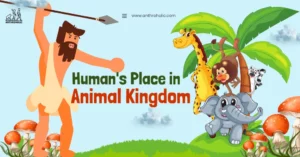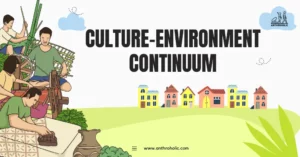AI Answer Evaluation Platform Live Now. Try Free Answer Evaluation Now
Comparative Philology
Comparative Philology is a critical branch of linguistic anthropology that investigates how languages change and evolve over time [1]. Originating in the 19th century, it systematically studies the relationships and similarities between languages, providing us with key insights into human culture, migration, and evolution [2].

The Evolution of Comparative Philology
The birth of comparative philology can be traced back to Sir William Jones, a British philologist and judge in colonial India, who in 1786 noted the similarity between Sanskrit, Greek, and Latin [3].
Table 1: A Comparative Study
| Sanskrit | Greek | Latin |
|---|---|---|
| Bhrātā | Phrater | Frater |
| Tri | Treis | Tres |
| Sapta | Hepta | Septem |
Table 1 indicates the similarity between Sanskrit, Greek, and Latin words for ‘brother’, ‘three’, and ‘seven’, suggesting a common ancestry for these languages [3].
Principles of Comparative Philology
Comparative philology relies on two basic principles:
- The Comparative Method: The primary tool of comparative philology, it enables the reconstruction of proto-languages (the hypothetical ancestral language from which a group of related languages descended) by comparing related words and grammar structures [4].
- Language Families: Languages evolve and differentiate over time, resulting in families of related languages. For instance, Latin gave rise to the Romance languages (French, Spanish, Italian, etc.), and Proto-Indo-European is the reconstructed common ancestor of the Indo-European languages (English, German, Russian, etc.) [5].
Comparative Philology in Anthropological Research
Anthropology, in its quest to understand human societies, often utilizes comparative philology. Languages are not merely tools of communication, but also the embodiment of culture, history, and collective memory. Therefore, by comparing languages, anthropologists can infer the shared history and migratory patterns of human populations.
Migration Patterns
Language divergence usually accompanies human migration. For instance, the dispersal of the Bantu languages in Africa from a single proto-language around 3000 BCE is closely tied to the Bantu expansion, which was a significant migration across Sub-Saharan Africa.
Cultural Exchange
Shared linguistic elements may reflect historical cultural exchanges. An example is the presence of Arabic loanwords in Spanish (e.g., “azúcar” for sugar, “alcohol” for alcohol) due to the historical Islamic presence in Spain.
The Interplay of Comparative Philology and Archaeology
Comparative philology’s contribution to archaeological understanding cannot be overstated. Often, archaeology presents material evidence, such as artifacts and structures, while comparative philology provides cultural context, facilitating more holistic interpretations.
For example, the decipherment of Linear B, an ancient script used in Mycenaean Greece, was achieved through the application of comparative philology. By comparing this script with known languages, philologists could translate it, unveiling a wealth of information about Mycenaean society and culture.
Comparative Philology and Genetic Studies
Recent advancements in genetic studies have bolstered the findings of comparative philology, leading to a synthesis of linguistics, archaeology, and genetics. This interdisciplinary approach helps trace human history and migrations more accurately.
A prime example of this synthesis is the study of the Indo-European languages. Linguists had long hypothesized the existence of a Proto-Indo-European language, from which all Indo-European languages descended. Using genetic studies to track the dispersal of specific genes, researchers have supported this hypothesis, suggesting the initial dispersal from a homeland located in the Pontic-Caspian steppe.
Comparative Philology in the Digital Age
As we move deeper into the digital age, the field of comparative philology is also evolving. The proliferation of digital humanities and computational linguistics has the potential to revolutionize this discipline.
The use of machine learning and artificial intelligence algorithms can facilitate language comparison and reconstruction on a scale previously unimaginable. By analyzing vast datasets of languages, these algorithms can identify patterns and relationships, thereby overcoming some of the limitations of traditional comparative philology.
Challenges and Criticisms
Despite its utility, comparative philology faces several challenges:
- Time Depth: It is challenging to reconstruct languages from more than 10,000 years ago due to the lack of written records and the natural language change over time.
- Imperfection of Linguistic Data: Languages are subject to borrowing, innovation, and loss, which can blur their evolutionary relationships.
Moreover, some critics argue that comparative philology tends to oversimplify the complexity of languages and cultures, viewing them in a linear, tree-like model that may not adequately reflect their true histories and interactions.
Conclusion: The Future of Comparative Philology
Comparative Philology, a field once restricted to the dusty corners of academia, is becoming increasingly relevant as we strive to understand our past and its influence on the present and future. As it integrates with other disciplines and adapts to technological advancements, comparative philology promises to continue enlightening our understanding of human culture, history, and evolution.
References
[1] Duranti, A. (1997). Linguistic Anthropology.
[2] Hock, H. H., & Joseph, B. D. (1996). Language History, Language Change, and Language Relationship: An Introduction to Historical and Comparative Linguistics. https://www.perlego.com/book/1357843/language-history-language-change-and-language-relationship-an-introduction-to-historical-and-comparative-linguistics-pdf
[3] Jones, W. (1786). Third Anniversary Discourse: On the Hindus.
[4] Campbell, L. (2004). Historical Linguistics: An Introduction.
[5] Ringe, D. (2006). From Proto-Indo-European to Proto-Germanic.




